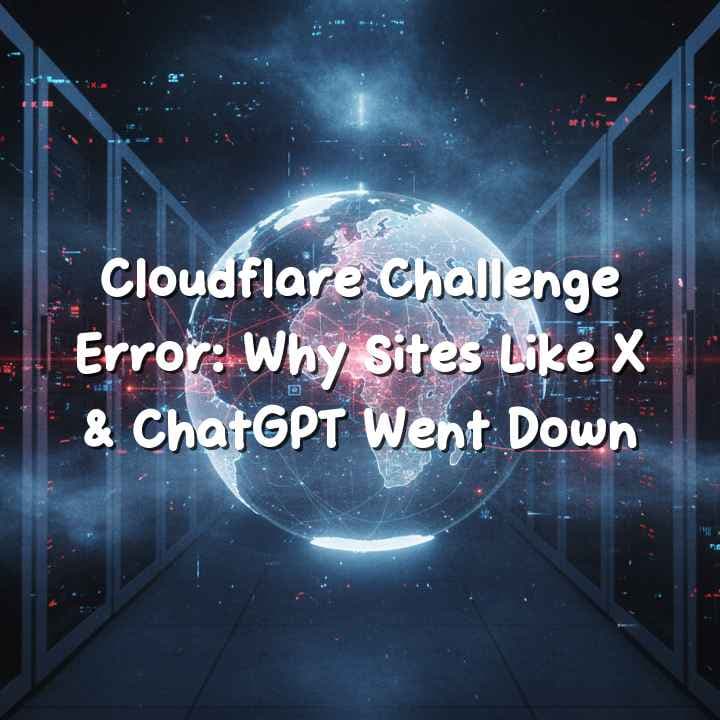
Google Ads Revenue Drop: Why Publisher Earnings Crashed in Nov–Dec 2025
A Complete Breakdown of RPM/CPM Declines, Privacy Shifts, and Advertiser Slowdowns
In late 2025, a growing chorus of digital publishers across the globe began sounding the alarm: their Google Ads (AdSense / Google Ad Manager) earnings plunged dramatically during November and December. Many reported steep drops in RPM (revenue per thousand impressions) or CPM (cost per mille), triggering concern and confusion. What is driving this sudden crash and is it permanent?
Here’s a detailed breakdown of the key causes behind this downturn, and what publishers can do to respond.
What Publishers Are Seeing: The Drop in Numbers
To understand the scale of the problem, consider the following real-world signals from publisher communities:
“It’s that China is crawling my website 18M times in 7 days … so the clicks increases … but the RPM decreased.” (Reddit)
These drops are noticeable and widespread, suggesting systemic factors rather than isolated platform bugs.
Why Is This Happening? The Main Drivers
Based on industry reporting, publisher discussions, and recent Google platform changes, the following are the most plausible and interconnected causes.
1. Privacy-Driven Signal Changes & GPC / Privacy Sandbox Impact
Privacy regulation and evolving ad-tech mechanisms are fundamentally reshaping how advertisers bid and how publishers monetize.
- Google’s Privacy Sandbox initiative (on Chrome) and other privacy-first shifts are reducing the availability of traditional user-level targeting. (Q4cdn)
- As targeting precision degrades, advertisers are less confident in paying premium CPMs for impressions whose value is harder to predict. MonetizeMore reports that less ad spend is going toward high-value, well-targeted inventory, and that “privacy regulations … have reduced targeting precision.” (MonetizeMore)
- Additionally, Google has retired some session-level metrics in AdSense reporting (like “Ad sessions” or “Ad session RPM”), pushing publishers to rely more on Google Analytics 4 instead. (PPC Land)
- The shift is not just about privacy but also about the measurement paradigm: as Google and others lean into aggregated (“privacy-safe”) signals, auction dynamics may favor more generic or lower-value bids.
All this collectively means that the value of many ad impressions especially those that previously relied on rich targeting could be decreasing.
2. Full Transition to eCPM / CPM-Bidding Model
Another big shift: many publishers are now seeing 100% CPM (or eCPM) bidding rather than a mix of CPC (cost-per-click) and CPM. (Search Engine Roundtable)
- Historically, Google AdSense was more CPC-driven publishers earned based on clicks. But with the changes, payments are increasingly based purely on impressions. (Search Engine Journal)
- While Google claimed this transition “won’t change how much publishers earn,” many publishers disagree. Some report that their CPM-based RPM is lower than what they used to get from CPC. (Search Engine Roundtable)
- This shift can disadvantage sites that previously earned more through high CTRs (click-through rates), because now revenue depends more on the volume and quality of impressions, not clicks.
3. Authorized Buyers Control Change (Programmatic / Auction Dynamics)
In November 2025, Google made a big change to how publishers can manage demand: it replaced the old “ad-networks blocking” control with a new Authorized Buyers system. (PPC Land)
- Under the new system, publishers get more granular visibility into which trading desks, DSPs, or buyer entities are bidding on their inventory. (PPC Land)
- But critically, all new authorized buyers are allowed by default. That means more demand sources may now access auctions without going through previously tighter scrutiny. (PPC Land)
- For some publishers, this means increased “auction noise”: more buyers competing, but not all paying high CPMs. Lower bidders may win more often, pushing down the average price.
- In addition, there's a one-hour delay for any blocking changes to take effect, making it hard to quickly react to poor-performing buyers. (PPC Land)
- This shift in buyer control dynamics may be eroding yield optimization, especially for smaller publishers who may not have the bandwidth to constantly monitor and block low-paying buyers.
4. Advertiser Slowdown & Budget Reallocation
Macroeconomic headwinds are not helping.
- According to MonetizeMore, economic uncertainty has caused many advertisers to reduce budgets, leading to softer demand. (MonetizeMore)
- With more cautious ad spend, advertisers may bid more conservatively, lowering bids or focusing on fewer, high-conversion placements rather than high-volume reach.
- Seasonal factors also play a role: while holiday spending often boosts ad demand, bidding delays (campaign budgets, strategy shifts) can create a lag. Advertisers may hesitate to deploy large new investments until campaigns prove effective, especially in a volatile economy.
5. Holiday Bidding Delays & Auction Timing Lags
Timing is everything especially in programmatic auctions.
- In the lead-up to peak holiday season, advertisers often plan and commit budgets carefully. Some may delay or stagger budgets, waiting for performance signals before scaling.
- Google’s own holiday planning guidance suggests using Seasonality Adjustments for smart bidding, especially when conversion rates are expected to change sharply. (Google Services)
- If many advertisers adopt a cautious or phased bidding strategy, this could compress CPMs temporarily, especially in November–December, when many auction opportunities are available but bid aggressiveness may not yet have fully ramped.
6. Bot Traffic, Crawling, and Low-Quality Impressions
Some publishers specifically point to non-human traffic or excessive crawling as a culprit.
- As noted on Reddit, one publisher claimed that “China is crawling my website … 18 M times in 7 days,” which spiked “clicks” but drove down RPM because these weren’t genuine users. (Reddit)
- Such bot-driven impressions can flood a site’s ad inventory, degrading overall monetizable value (because many bids may come from buyers who pay less for low-quality or bot-like impressions).
- Even more benign crawling (e.g., from data scrapers or AI training bots) can distort metrics, making it harder for publishers to optimize ad yield, and potentially harming perceived quality by demand-side platforms.
Why This Is a “Crash” Moment Not Just a Glitch
Putting all of the above together, what’s happening looks more structural than temporary. Here’s why many are treating this as a meaningful “crash”:
- Multiple Levers Changed Simultaneously
- Payment model (full CPM),
- Authorized Buyers system,
- Session metrics removal,
- Privacy & targeting signal degradation,
- Seasonal bidding behavior.
The confluence of these changes is amplifying their individual impact.
- Publisher Control Has Weakened
With more buyers allowed by default, delays in blocking, and less transparency on session-level metrics, publishers have fewer levers to optimize in real time.
- Advertiser Caution Is Real
In uncertain economic conditions, marketers are understandably careful, which could sustain lower bid levels.
- Measurement & Attribution Is Shifting
As Google pushes publishers to use GA4 and aggregated signals, classic metrics (clicks, sessions) are losing prominence. This transition could hide some of the impact but also make optimization harder.
What Can Publishers Do to Mitigate the Drop
Though the situation is challenging, there are several proactive steps publishers can take to adapt and protect their revenue:
- Audit & Refine Authorized Buyer Settings
- Regularly review which buyer entities are bidding on your inventory.
- Block consistently underperforming buyers or those with very low eCPMs.
- Monitor auction winners and buyer performance.
- Leverage Google Analytics 4 (GA4)
- Since session-level metrics are being deprecated in AdSense reporting, ensure GA4 is well-integrated with your ad setup.
- Use GA4 to segment traffic quality, track user behavior, and identify where low-value impressions may be coming from.
- Implement Bot / Crawler Protection
- Use Cloudflare or similar WAF (Web Application Firewall) tools to block or challenge suspicious IPs or bots.
- Analyze server logs for repeating crawler patterns (high-frequency hits) and block or throttle them.
- Optimize Ad Experience
- Revisit ad placements and formats: are you showing ad units that maximize viewability and high-paying demand?
- Test whether reducing ad density (or changing ad types) improves yield per impression.
- Use heatmap tools to see where users engage most, and align ad units accordingly.
- Diversify Revenue Streams
- Consider reducing reliance solely on Google Ads / AdSense. Explore alternative ad networks, sponsored content, memberships, or affiliate revenue.
- This provides a buffer if CPMs remain suppressed.
- Communicate with Demand-Side Partners
- If you work directly with advertisers or agencies, talk to them about performance and encourage them to ramp up budgets.
- For programmatic demand, evaluate whether certain DSPs (demand-side platforms) provide better value for your inventory.
- Monitor Trends & Be Patient
- Track your RPM, CPM, buyer behavior, and auction dynamics over weeks, not just days.
- Use historical data and year-on-year comparisons to filter out seasonality.
- Leverage Google’s “seasonality adjustments” if you use smart bidding (as per their holiday planning guidance). (Google Services)
Final Thoughts
The November–December 2025 drop in Google Ads revenue for publishers seems to be a multi-factor issue not just a temporary glitch or seasonal dip. Privacy-driven measurement changes, a full shift to CPM bidding, new buyer control systems, and advertiser caution all combine to pressure publisher earnings.
For many, this feels like a structural reset. But it’s not necessarily a death sentence. Savvy publishers who adapt by tightening control, improving traffic quality, and diversifying monetization can navigate this turbulence and possibly come out stronger.
If you’re experiencing this drop, you’re not alone and you don’t have to be helpless. Use the levers you still control, keep a close eye on data, and adjust strategically.
FAQ:
1. Is this revenue drop temporary or long-term?
It doesn’t appear to be just a seasonal dip. While November–December usually brings higher ad spending, this decline is driven by deeper industry changes — privacy restrictions, cookie loss, GPC expansion, and bidding shifts. This means the lower RPM/CPM levels may become the “new normal” rather than a short-term fluctuation.
2. Are these changes affecting only Google AdSense and Ad Manager?
Both yes and no. Many of the changes (privacy sandbox, cookie phase-out, global privacy signals) affect the entire digital advertising ecosystem. However, Google’s platforms feel the impact more sharply because they rely heavily on behavioral targeting and programmatic bidding.
3. Are small publishers affected more than larger ones?
Yes. Small and medium publishers feel the decline more intensely because they often lack:
- advanced analytics tools
- diversified income streams
- access to premium advertisers
But this is not the end. By improving traffic quality, reducing invalid traffic, and diversifying monetization, small publishers can still recover stability.
4. Should publishers switch to other ad networks now?
Not necessarily switch — but diversifying is wise. Relying only on Google is risky, especially during a system-wide transition. Adding:
- alternative ad networks
- direct sponsorships
- affiliate marketing
- subscription models
- can help stabilize earnings.
5. How should publishers adjust their analytics strategy now?
Since Google is reducing or removing some session-level AdSense metrics, relying on Google Analytics 4 (GA4) becomes critical. GA4 provides deeper insights into:
- traffic quality
- user engagement
- bot traffic
- content performance
- This helps publishers optimize their monetization strategy more effectively.




